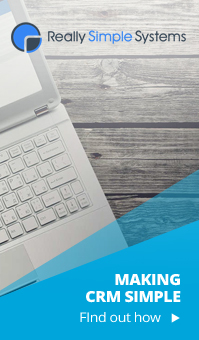
7 Steps to Success with CRM
1. Commitment from the Top to an “Outward Facing”, Customer Centric Culture
The right culture must be adopted from the CEO down. This commitment is the cornerstone of successful CRM. It is not about buying some technology and believing you now have the answer to winning and retaining profitable customers.
Organisations will be in different stages of their “customer centric lifecycle”, so appropriately tailored and ongoing training must be implemented, aligning customer facing personnel with the desired behaviour.
2. Identify and Align Key Business Drivers with IT
(Remember information technology is merely a tool of the business, not a goal in itself.)
Two key activities to the processes of identifying and aligning are:
- CEO/COO briefing
- Brief, High Level Workshops
CEO/COO Briefing
Understand the company vision and objectives from top line executives and how IT impacts these. high level assessment criteria (e.g. local support, industry experience, fit to component model. technology vision, integration strategy, financial stability etc.) should be identified and documented as the benchmark for aligning potential solutions with strategic objectives.
Brief, High Level Workshops
These workshops should be conducted with a representative cross section of key users and executives from core business streams to identify issues at the coal face. The issues should reinforce and/or add to key assessment criteria identified above.
- Brief - we mean one hour per business stream per representative office.
- High level - we look at the big picture, not get bogged down with minute detail, for example, “our salesman are losing deals because competitors can print quotes from their laptops on the spot” as opposed to “I don’t like this screen or colour”.
The workshop process is vital as it encourages user buy in from the start. It is also highly recommended to have the workshops facilitated by an external and independent partner:
- External because he can advise on world's best practice, experience of other organisations and on a range of products and methods. He brings fresh ideas, questions incumbent routines and is not bound by pre-existing culture, methods and politics.
- Independent because you don’t want to go through “the process” only to find the consultant is aligning your business to his product.
3. Vendor Alignment to Key Business Drivers
This involves a two-step process:
Step One
Appropriate vendors are selected for each core business stream under review, and briefed of the key drivers. Vendors should be asked to submit a Positioning Statement addressing how their products and services can meet the business objectives given the assessment criteria. High level indicative pricing should also be requested, mainly to rule out solutions that are obvious budget misfits.
Step Two
Vendor Positioning Statements are reviewed, summarised and scored based on the key assessment criteria, forming a “probables” and “possibles” list.
Again, it is important your partner in this process is independent and sufficiently credentialed, not just locally but globally to identify existing technologies and vendors as well as the latest and emerging products that could potentially deliver you a strategic edge.
4. Preparing the Business Case
This is an evolutionary process with input from the first three steps, continuing through step 5 prior to sign off:
(a) Start by comparing the benefits and costs
This should include the valuing of tangible as well as intangible benefits and stating all assumptions made, goals and possible technologies to be used. At this stage high level conceptual design and cost-benefits statements should be well documented, shared and discussed with executive officers;
(b) Define measurable outcomes
These will be used to determine the success or failure of the project at various times during “work-in-progress” and the cycle of “live” use;
(c) Executive to review the Business Case to-date, deciding on the next course of action
For example continue, adjust and continue, don’t continue. If the business case is rejected the process stops here, otherwise: Go to Step 5.
After Step 5 we complete the Business Case.
(d) With specific details now known (preferred vendor, price, project plan, deliverables, live date etc).
(e) Provided the business case stands up to critical questioning, likely to come from the Board of Directors, is signed off, the budget approved and the scene is set for the actual implementation.
It should be noted that particularly in large implementations there might well be a prototyping phase prior to contract acceptance and full implementation.
Now to Step 6, Implementation
5. Prepare a Detailed Functional Requirements Checklist
The shortlisted vendors are issued with an official Requirements For Tender (RFT) for completion by a certain date. Firmer pricing is requested in this process.
RFT submissions are then reviewed and demonstrations organised for vendors still in contention. The field is then narrowed to a preferred vendor, with may be one or two fall back options. Final pricing is negotiated and draft contracts drawn up.
Now back to Steps 4 (d) and 4 (e) to complete the business case
6. Implementation
Many projects get into difficulties during this phase. Key risk areas are:-
- The experience of the suppliers and contractors involved;
- Commitment of senior management to the success of this project;
- Communication of expectations between users, managers and suppliers;
- Size of the project; it should contain phases, with milestones and deliverables every few months. Value should be delivered as early as possible in the project life cycle.
7. Analysis, Monitoring and Adjustments
The design of Customer Relationship Management systems must include key performance indicators for the ongoing monitoring of customer satisfaction and possibly market share. Experienced CRM designers can help to specify key performance indicators and their measurements.
A CRM implementation will be a major project, in large organisations often ranging over one or two years. Good project management, commitment at the board level and a phased approach are essential.
Date posted: 2014-12-15 | posted by: miked
Tweet



